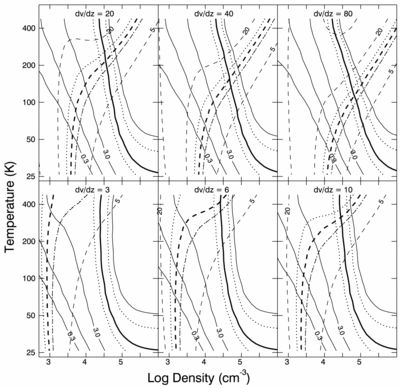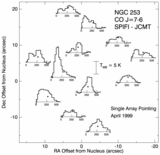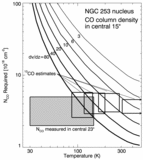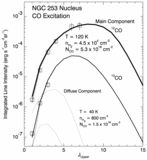Image Details

Caption: Fig. 2.
Shows LVG model calculations compared with observed line ratios. Contours of the 12CO ﹩J=7\rightarrow 6/J=3\rightarrow 2﹩ intensity ratio are plotted as solid lines (values of 0.3, 1, 3, and 10). Calculations are also performed for the 13CO transitions, assuming an abundance ratio of 50. The 12CO/13CO ﹩J=3\rightarrow 2﹩ ratio is shown with the dashed lines (values of 5, 10, 20, and 40). For both ratios, the observed values are shown with thick lines, bracketed with thin dotted lines showing 20% uncertainty. Scaling the CO abundance from the canonical ﹩8\times 10^{-5}﹩ is equivalent to adjusting the velocity gradient in the opposite direction with the same factor. With the canonical CO abundance, the velocity gradient must be greater than 10 km s−1 pc−1 to reproduce the data. Larger CO abundances require even larger velocity gradients.
Copyright and Terms & Conditions
© 2003. The American Astronomical Society. All rights reserved. Printed in U.S.A.






